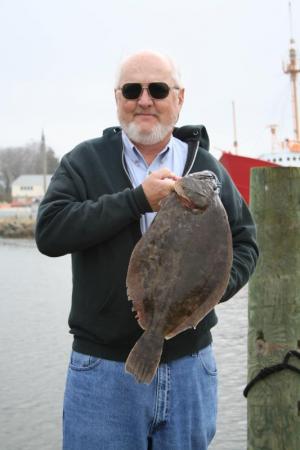I am always amazed that so many people are anxious to go fishing so early in the year when the water temperature is still in the low 40s. These same folks will stop fishing in the fall as soon as football season opens up, in spite of the fact that the water temps are still in the lower 70s and the fishing is still great.
Last Friday, I saw quite a few folks on the water at Millsboro Pond and in Milton at the headwaters of the Broadkill River. I did have reports of successful freshwater catches of bass and pickerel, but nothing from the saltwater. The upper reaches of the tidal creeks and rivers saw decent numbers of white perch, with bloodworms the top bait. Over in Maryland, Millington was the site of some yellow perch catches on shad darts tipped with minnows.
Before we can expect any action from weakfish, the water temperature will have to reach at least 45 degrees, and it will be better the closer it gets to 56. Bluefish will begin to get active at 50 degrees, and really get the feed bag on at 66 and above. The most popular fish for Delaware anglers is the summer flounder, and they begin to get active at 56 degrees and will start to become more aggressive when the water temperature reaches 62.
The last time I checked, the water temperature in the ocean and bay was in the low 40s. The next week will see daytime temperatures in the 50s and 60s with only a little rain and no sub-freezing temperatures. If this forecast holds, the water temperature should begin to rise, and we could see the first trout, bluefish and flounder in shallow water sometime around mid-April.
The first fish will show up in shallow water because that is where the sun has the greatest impact. The best situation is when the sun has a chance to heat the water during high tide. If you can fish the last two hours of the flow and the first two hours of the ebb in the Lewes-Rehoboth Canal, the flats in Rehoboth Bay, the Coral Beds off Slaughter Beach and the shallow area in front of Broadkill Beach, that is the sort of structure where the water will warm first. Surf casters will do well to try Broadkill Beach for rockfish and trout, with peeler crab the prime bait. Back in the day when big trout ruled Delaware Bay, the first tiderunners usually came from the waters along Slaughter or Broadkill Beach.
This is a bait-and-wait game. Peeler crab is the top bait for both rockfish and black drum. I am always surprised how many unemployed people there are lining the banks at Broadkill Beach once the first report of black drum or rockfish leaks out.
Down in Indian River Bay, the shallow flats that run from White’s Creek to South Shore Marina on up to the Junction Buoy into Massey’s Landing will heat up first. You have to get there very early in the day before the place is covered up with boats, jet skis and other assorted watercraft.
The water here is very shallow, and you must be quiet while fishing, especially if you have an aluminum boat like mine. Try not to drop anything on the deck or bang things against the hull. When moving around the flats, I use the electric trolling motor because it is quiet. When the drift is over, I will use my outboard motor to run back along the deep channel outside the flat so as not to disturb the fish feeding in the shallow water.
I fish with two rods. One has a live minnow with no weight and the other has a green bucktail decorated with a Gulp! crawfish in new penny. I have also used a D.O.A. shrimp on the second rod. The first outfit rides in a rod holder, while the second rod is held and the bucktail or D.O.A. shrimp is worked constantly to give it some action.
I have caught flounder, trout and bluefish here doing exactly what I just explained. In fact, my largest flounder, an eight-pounder, was caught on the free-swimming minnow.
The Lewes-Rehoboth Canal is a very good flounder spot, but it can get crowded. My trolling motor comes in handy keeping my boat pretty much where I want it, which is around the down-current side of any structure such as docks and bridge pilings. I use the same setup here as I do at Indian River Bay. I will keep the lead on the bucktail short so I can fish it tight to any structure.
Hang in there; spring is closer than you think!






















































